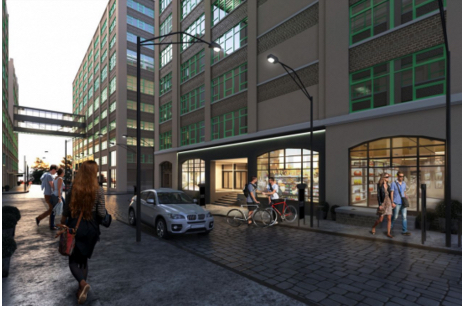Report: Impact of Brooklyn Tech Triangle’s innovation economy to reach $15.5 billion by 2025
Number of employees up 45% since 2012

The economic impact of the Brooklyn Tech Triangle’s innovation economy is projected to more than triple in the next ten years, according to a report released by the Downtown Brooklyn Partnership, Brooklyn Navy Yard Development Corporation, and DUMBO Improvement District today. That projected boom, along with strong growth since 2012, highlights the dire need for new commercial development in the area that would provide an opportunity for nearly 18,000 additional jobs and $4.8 billion in further economic impact. The report is available at http://brooklyntechtriangle.com
“The innovation economy is booming in the Tech Triangle,” said Tucker Reed, President of the Downtown Brooklyn Partnership. “Now, with Downtown Brooklyn’s commercial vacancy rate hovering around 3%, it’s time for the City and private sector to harness the Tech Triangle’s incredible economic potential and tackle its office-space crisis head on. Bottom line: the more space we create in the Tech Triangle, the more jobs we’ll spur.”
“Innovators and makers are gravitating to the Brooklyn Tech Triangle at a rapid pace,” said Brooklyn Navy Yard Development Corporation President David Ehrenberg. “People are making a conscious choice to work in Brooklyn, and we need to create more space to meet this demand. Brooklyn has long been a creative catalyst, and the Tech Triangle brings together our brightest minds in tech and manufacturing at an exciting intersection, allowing for collaboration. This report definitively proves what we have suspected all along, creating new work space, enhancing our transportation infrastructure, and leveraging city assets to create growth are key to the continued success and growth of the Yard, and the entire Tech Triangle. With the Yard set to double in size in the next few years, we are prepared to support the continued growth, innovation, and good new jobs that are central to the mission of the Brooklyn Tech Triangle.”

Brooklyn Boro
View MoreNew York City’s most populous borough, Brooklyn, is home to nearly 2.6 million residents. If Brooklyn were an independent city it would be the fourth largest city in the United States. While Brooklyn has become the epitome of ‘cool and hip’ in recent years, for those that were born here, raised families here and improved communities over the years, Brooklyn has never been ‘uncool’.